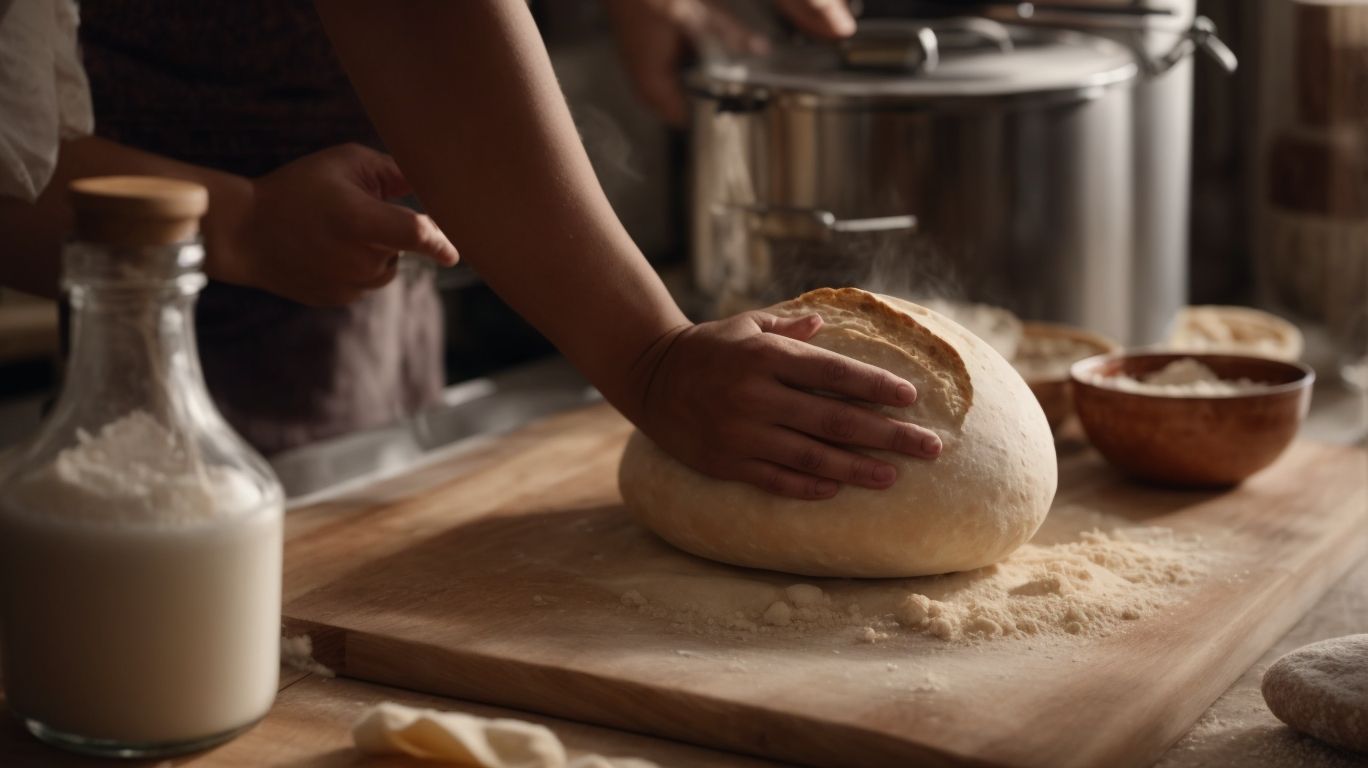How to Bake Unleavened Bread?
Do you know what unleavened bread is and how to bake it?
Discover the ingredients needed, the differences between unleavened bread and regular bread, and the benefits of choosing unleavened bread.
We will also provide you with a step-by-step guide on how to make this delicious bread at home, along with tips on how to bake the perfect batch.
Get started and uncover the secrets of baking unleavened bread!
Key Takeaways:
What Is Unleavened Bread?
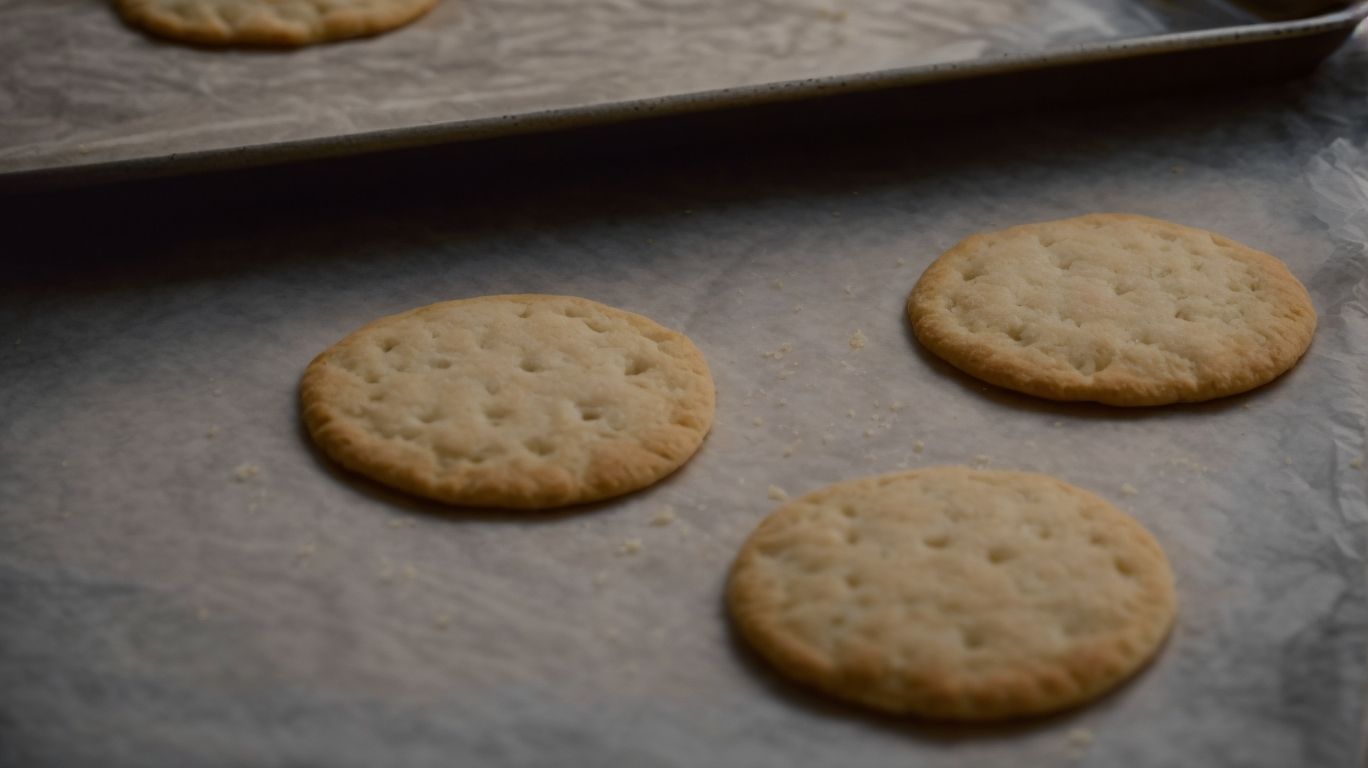
Credits: Poormet.Com – Dennis Mitchell
Unleavened bread is a type of bread made without using yeast or other leavening agents, resulting in a dense and flat loaf.
This type of bread has a significant role in various cultures and religions and has been consumed for centuries. It holds prominence in Jewish culture, especially during Passover when leavened products are avoided. In historical contexts, unleavened bread was favored as it could be made quickly without the need for fermentation, making it a practical choice for nomadic lifestyles. Commonly used ingredients include flour, water, and salt, mixed to form a simple dough that is then rolled out and baked until crisp.
What Are the Ingredients for Unleavened Bread?
The ingredients for unleavened bread typically include flour, salt, and water, which are combined to form a simple dough.
Flour, the primary ingredient in unleavened bread, provides the structure and texture to the final product. It is essential to use a high-quality flour with a low gluten content to achieve the desired consistency. Salt not only enhances the flavor but also helps to strengthen the gluten structure. When combined with water, it activates the proteins in the flour, aiding in the dough formation.
Water plays a crucial role in binding the ingredients together and hydrating the flour. The amount of water used can impact the texture of the bread, so it is important to add it gradually while kneading the dough until you reach the desired consistency.
What Is the Difference Between Unleavened Bread and Regular Bread?
The main difference between unleavened bread and regular bread lies in the absence of yeast or leavening agents in unleavened bread, resulting in a denser texture and faster baking process.
Unleavened bread, commonly found in various cultures and cuisines, is primarily made from a simple mixture of flour and water without the addition of yeast. This lack of leavening agents in unleavened bread leads to a more compact and flat structure compared to traditional bread varieties. While traditional bread types undergo fermentation due to yeast or other leavening agents, unleavened bread relies on other methods like chemical leavening agents or physical manipulation of the dough to create air pockets.
The absence of yeast in unleavened bread affects not only its texture but also its flavor profile. Due to the absence of fermentation, unleavened bread tends to have a more neutral taste, making it a versatile option that can be paired with a variety of dishes ranging from savory to sweet. This simplicity in preparation also translates to a quicker baking process, making unleavened bread a convenient choice for situations that require minimal preparation time.
Why Bake Unleavened Bread?
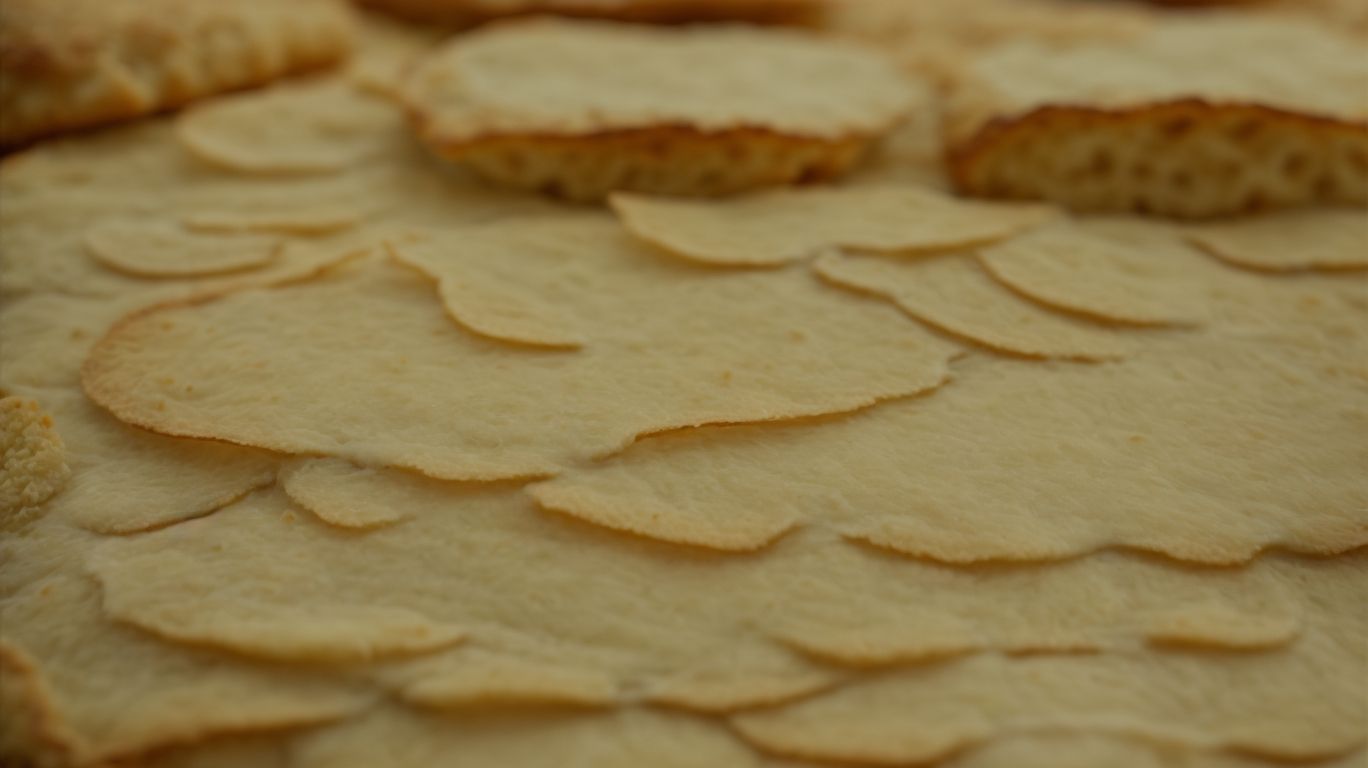
Credits: Poormet.Com – Steven Hernandez
Baking unleavened bread offers a nutritious and convenient option for meals, especially for those seeking a healthier alternative to traditional bread.
One of the key advantages of opting for unleavened bread is its health benefits. Unlike leavened bread that contains yeast which may trigger digestive issues for some individuals, unleavened bread is easier on the stomach, making it a suitable choice for those with sensitive digestive systems. Its simplicity in ingredients also appeals to health-conscious individuals looking to avoid additives and preservatives commonly found in store-bought bread.
The versatility of unleavened bread in meal preparations is a major draw for many. From wraps and flatbreads to crackers and chips, unleavened bread can be adapted to various cuisines and dishes, allowing for creative and diverse culinary experiences. Whether used as a base for savory toppings or enjoyed with sweet spreads, unleavened bread adds an element of novelty to meals.
Along with its nutritional benefits and culinary adaptability, unleavened bread holds significance in various cultural and religious contexts. It serves as a staple food in many cultures, symbolizing purity, simplicity, and tradition. During religious observances or specific dietary practices, unleavened bread plays a central role, reinforcing connections to heritage and beliefs.
What Are the Benefits of Eating Unleavened Bread?
Eating unleavened bread can offer benefits such as lower calorie content and improved carbohydrate balance compared to traditional bread varieties.
Unleavened bread, typically made with just flour, water, and salt, contains fewer calories due to the absence of yeast or other leavening agents. This can support individuals looking to maintain calorie control or reduce their daily intake.
The balanced carbohydrate profile in unleavened bread can contribute to stable blood sugar levels and sustained energy throughout the day, making it a suitable choice for those watching their carbohydrate intake.
Is It Healthier Than Regular Bread?
Unleavened bread is often considered a healthier option than regular bread due to its lower carbohydrate content and potential for customization to suit different dietary needs within a family.
Its simplicity in ingredients, typically comprising flour, water, and salt, results in a product lower in carbs and sugar, making it a favorable choice for those following a low-carb or ketogenic diet. This type of bread is known for its high fiber content, aiding in digestion and promoting feelings of fullness. Unleavened bread is also versatile, allowing families to add their preferred herbs, seasoning, or even nuts and seeds for extra flavor and nutrition.
How to Make Unleavened Bread?
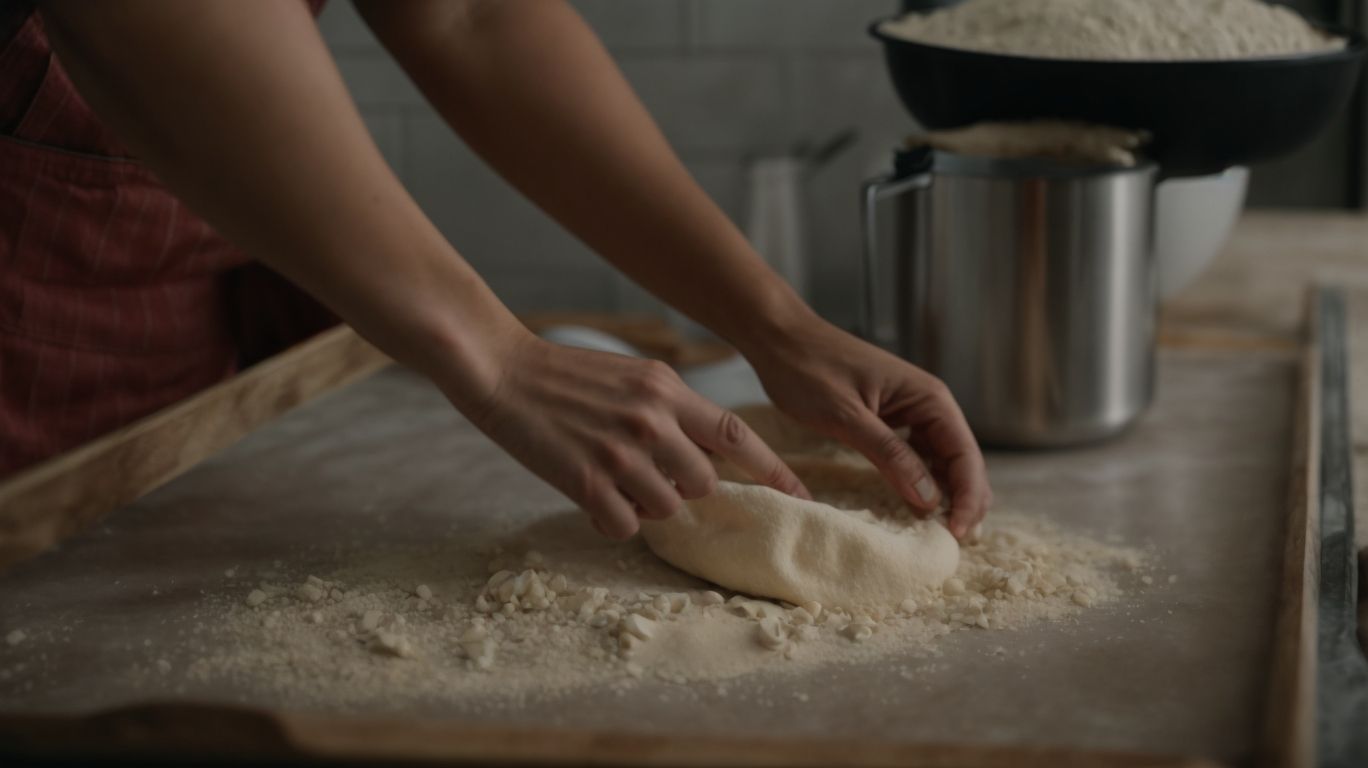
Credits: Poormet.Com – Jonathan Robinson
Making unleavened bread involves a straightforward process that includes gathering the ingredients, mixing the dough, kneading the mixture, shaping the bread, and finally, baking it to perfection.
Once you have gathered all the ingredients necessary for unleavened bread, which typically includes flour, water, salt, and optional seasonings, you can start the process by combining them in a mixing bowl.
Kneading the dough is a crucial step that determines the final texture of the bread. Proper kneading helps develop gluten, providing that desired chewiness.
After kneading, you should shape the dough into rounds, ovals, or any desired form before placing them on a baking sheet.
Bake the unleavened bread in a preheated oven until it reaches a light golden color, then allow it to cool and enjoy!
Step 1: Gather the Ingredients
The initial step in making unleavened bread is to gather the necessary ingredients like flour, water, and salt, ensuring proper storage conditions to maintain freshness.
When selecting flour, opt for high-quality options such as all-purpose flour or whole wheat flour for different textures and flavors. Make sure the flour is stored in an airtight container to prevent moisture absorption and spoilage.
Water, being a vital ingredient, should be fresh and at room temperature for best results. Filtered water can enhance the overall taste of your unleavened bread.
For salt, use kosher salt or sea salt for a more pronounced flavor profile. Keep it in a cool, dry place away from direct sunlight.
Step 2: Mix the Dough
Mixing the dough for unleavened bread involves combining the flour, water, and salt into a cohesive mixture that can be easily shaped for baking in a skillet or on a baking sheet.
To achieve the right consistency, it is crucial to slowly incorporate the water into the flour and salt mixture, adding it gradually while kneading until the dough forms a smooth, elastic ball.
Ensuring the dough is neither too dry nor too sticky is pivotal for success when making unleavened bread. This balanced texture will allow for easy handling and shaping of the dough.
Regarding cooking, using a well-heated skillet or a preheated baking sheet can help achieve that perfect crispness and browning on the bread’s surface. These surfaces conduct heat efficiently, contributing to the desired texture of the unleavened bread.
Step 3: Knead the Dough
Kneading the unleavened bread dough is a crucial step that helps develop gluten and ensures the bread maintains its structure during baking in the oven or on a skillet.
When kneading the dough, the kneading action aligns the gluten proteins, creating a network that traps gases produced during baking, giving the bread its desired texture. Proper kneading technique involves pressing the dough with the heel of your hand, folding it over, and repeating until the dough becomes smooth and elastic.
For oven baking, preheat the oven to the recommended temperature before placing the dough inside to bake. When using a skillet, ensure it is well heated before adding the dough to achieve a nice crust. Pay attention to the bread while baking, adjusting time and temperature as needed for a perfect result.
Step 4: Shape the Dough
Shaping the unleavened bread dough involves forming it into individual pieces of desired size and shape, typically in a circular or oblong format with consistent diameters for even baking.
One common shape for unleavened bread is the classic round flatbread, achieved by patting or rolling out the dough into circles. To ensure uniformity, you can utilize a round cutter or simply shape it by hand.
Another popular option is the elongated shape, perfect for wraps or sandwiches. Dividing the dough into equal portions prior to shaping can help maintain consistent sizes. Remember, uniformity is key for allowing the bread to bake evenly and achieve the desired texture.
Step 5: Bake the Bread
Baking the prepared unleavened bread dough involves placing it in a preheated oven or skillet at a specific temperature for a set duration, ensuring thorough cooking and desired browning.
For oven baking, preheat the oven to 375 degrees Fahrenheit (190 degrees Celsius) and transfer the dough onto a parchment-lined baking sheet. Bake for approximately 12-15 minutes or until the bread becomes slightly golden and crisp around the edges. Monitor it towards the end to avoid over-browning.
If using a skillet, preheat it over medium heat and place the dough directly on the skillet surface. Cook for about 3-4 minutes on each side, flipping once, until both sides achieve a light brown color and the bread is cooked through.
Tips for Baking the Perfect Unleavened Bread
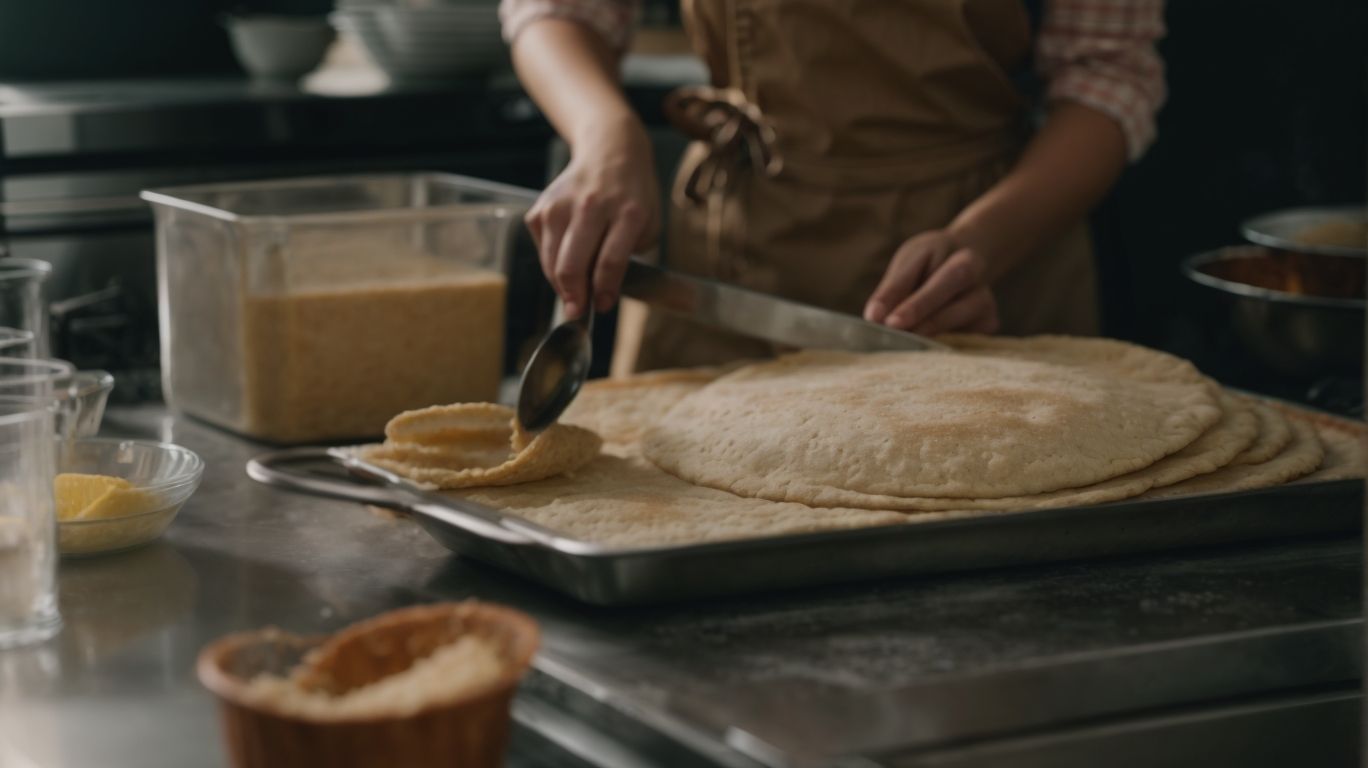
Credits: Poormet.Com – Wayne Hall
To achieve the perfect unleavened bread, focus on attaining the right texture, avoiding common mistakes, and serving the bread hot with optional butter and herbs for added flavor.
Texture plays a vital role in the overall experience of unleavened bread. Aim for a delicate balance between softness and slight chewiness for that ideal consistency. Mistakes like over-kneading or insufficient hydration can result in a tough or dry texture, so handle the dough with care and follow the recipe guidelines closely.
When serving unleavened bread, consider accompanying it with herb-infused butter to elevate the taste profile. This simple addition can bring a delightful aroma and richness to every bite. Try experimenting with various herbs like rosemary, thyme, or even garlic to complement the bread’s flavor.
How to Get the Right Texture?
Achieving the ideal texture for unleavened bread involves balancing dough moisture levels, utilizing butter or oils for softness, and incorporating herbs for a flavorful finish.
One crucial aspect of optimizing the texture of unleavened bread is ensuring the dough has just the right amount of moisture. Too much moisture can result in a dense, gummy texture, while too little can lead to a dry and crumbly consistency. Adding butter or oil not only contributes to softness but also helps in moisture retention, enhancing the overall mouthfeel of the bread.
The incorporation of herbs in unleavened bread recipes can elevate the taste profile, providing a delightful sensory experience. The choice of herbs, whether it be fragrant rosemary or zesty thyme, can significantly impact the flavor palette of the bread, making each bite a culinary delight.
What Are Some Common Mistakes to Avoid?
Common mistakes when making unleavened bread include over-kneading the dough, improper ingredient ratios, and inaccurate baking instructions, which can affect the final taste and texture.
Over-kneading the dough can result in a tough, dense final product, lacking the desired lightness and airiness. It’s crucial to knead the dough just enough to bring it together without being tough or too sticky.
Similarly, incorrect ingredient ratios can throw off the balance of flavors and textures, leading to an unsatisfactory end result. Make sure to follow the recipe measurements precisely to achieve the perfect consistency and taste.
Regarding baking instructions, accuracy is key. Baking the bread too long can dry it out, while under-baking can result in a doughy texture. Follow the recommended baking times and temperatures for a delicious, well-textured unleavened bread.
Conclusion
Baking unleavened bread provides a delightful balance of simplicity, tradition, and versatility, making it a cherished choice for families seeking wholesome homemade options to share and showcase on platforms like Instagram.
The process of crafting unleavened bread at home not only connects individuals to their cultural roots through time-honored recipes but also fosters a sense of togetherness during family meals.
Whether it’s the fragrant aroma wafting through the kitchen or the warm satisfaction of breaking bread together, homemade unleavened bread holds a special place in the hearts of those who partake in it.
The visual appeal of these creations can be shared and celebrated beyond the family table, with platforms like Instagram providing a space for individuals to showcase their culinary talents and engage with a broader community of fellow food enthusiasts.
Frequently Asked Questions
How to Bake Unleavened Bread?
– What is unleavened bread and how does it differ from regular bread?
– What ingredients do I need to make unleavened bread?
– Can I use a bread machine to make unleavened bread?
– How long does it take to bake unleavened bread?
– Can I add extra ingredients to my unleavened bread recipe?
– How can I tell when my unleavened bread is fully baked?

